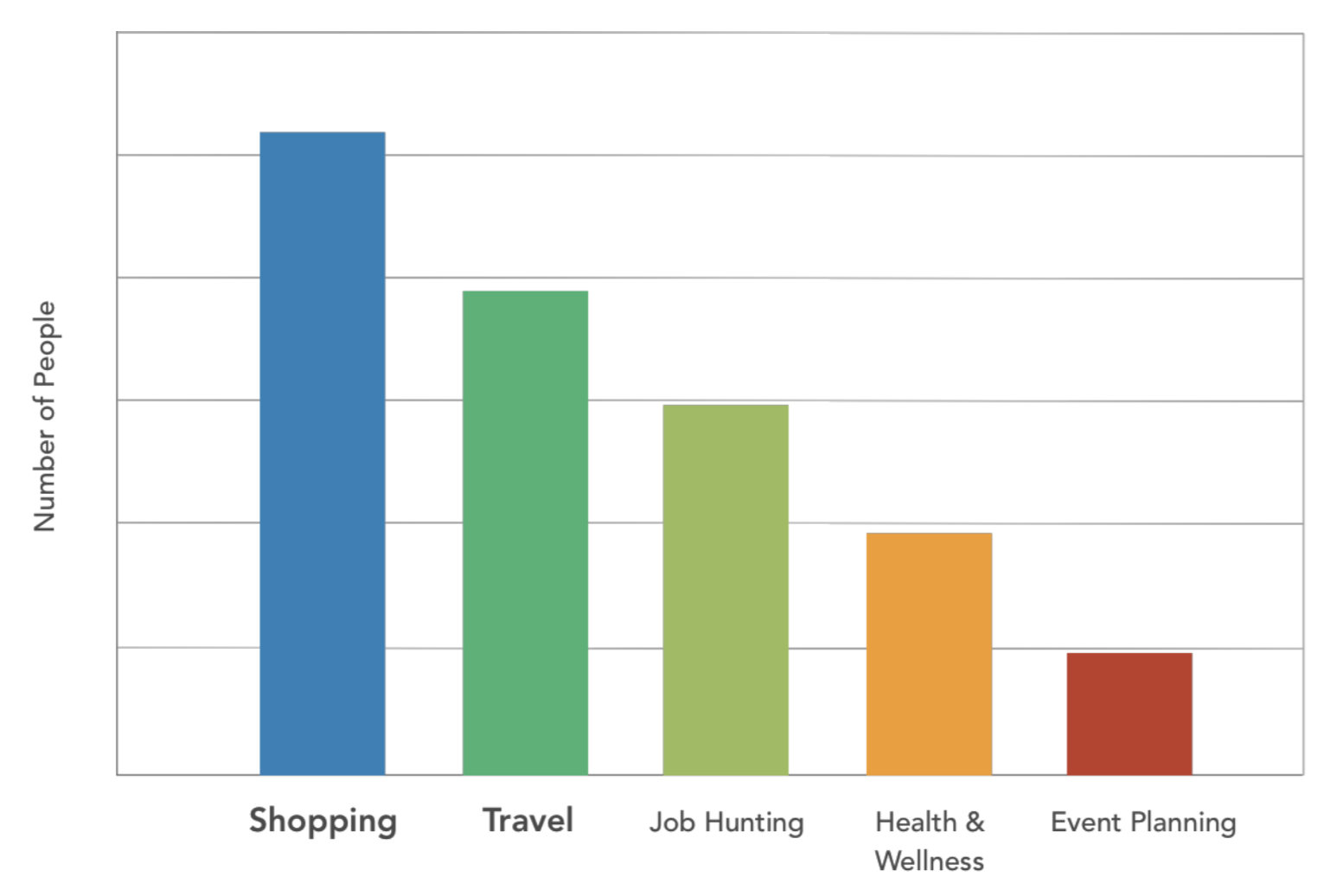Our client Prof. Kittur's research in online sensemaking turned into an entrepreneurial endeavor, Fuse. Fuse is a Chrome extension that allows users clip all kinds of information from the web to help with online research. Although Fuse can be used for different purposes, the lack of specific usage scenarios has delayed its adoption. Hence, we were tasked to find a user group that would benefit from Fuse's technology.
Since we were aiming at adoption for the tool, we wanted to quickly choose a domain where there are potentially many user who conducts intensive research. Through a survey on online research behaviors with 241 participants, we learned that Shopping is the most promising domain.

We conducted two rounds of research: 11 interviews focusing on tools and general processes and 18 directed storytelling sessions about the detailed process for a recent electronic purchase. Through these data points, we were able to get a holistic understanding of the user's journey and specific research behaviors.
After affinitizing these findings, we developed three behavioral models that depicts research processes and pain points across the participants. We are then able to zoom into the friction points and start to ideate for solutions that would help alleviate them.

The linear model is a straightforward process characterized by a single round of research, followed by contextualization (how does this product fit into my life), then a decision & potential subsequent purchase.
Through the affinity diagram and behavior models, we learned that people's research behavior and time spent is influenced by: the importance of the purchase, prior knowledge about the domain, time available, and passion for the topic. There are also pain points around research along the way:
Based on the pain points we have identified, we started our ideation process and came up with more than 30 ideas to address with those friction points. We ended up doing two rounds of testing with storyboards and solution sketches with 18 participants to see if users would respond to solutions that may help them speed up the process.

Contrary to our expectation that feedback from speed-dating sessions will point us to a clear direction, the results actually pushed us to think from a different perspective. Although the participants acknowledge the pain points we identified and some solutions gained traction, the overall takeaway was that majority of people would not spend a significant amount of time and effort to research for their purchases and thus, do not need a designated tool to help with that.
Realizing that the need for an information collection tool is not strong enough among regular online shoppers, we shifted our focus to the other end of the spectrum: since most online shoppers would consume already synthesized research from others, such as product recommendations, why don't we target the people who are creating such content?
Instead of trying to make a tool that helps everyone research for themselves, we could just make things easier for passionate contributors to create more content online!